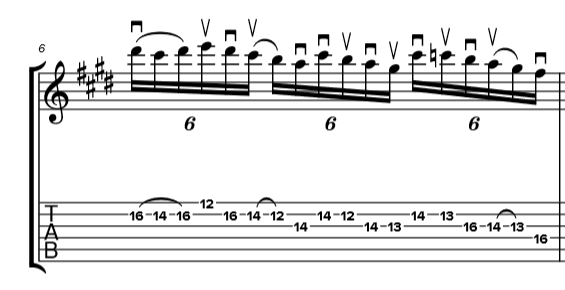If you’re rejiggering a phrase to make it easier to play and you encounter an odd note (e.g. 3 or 5 nps) segment that you’re not going to refinger, do you have any strong opinions on which note to slur or not? Why?
I’ll start the discussion going:
- The last pick stroke has to match the desired escape motion. I could’ve left this one implied, but for the sake of completeness

- If there’s a note in the group that lands on the beat I prefer picking that, because it helps me keep time better.
- I prefer use a downstroke for notes that land on the beat.
- I want to pick the first note in the group, to avoid hammer-ons from nowhere and keep the sound of the notes a bit more even.
What are your preferences? Are players like YJM consistent about how they do this?

 but in medium to medium fast phrases I think it can make a difference.
but in medium to medium fast phrases I think it can make a difference.